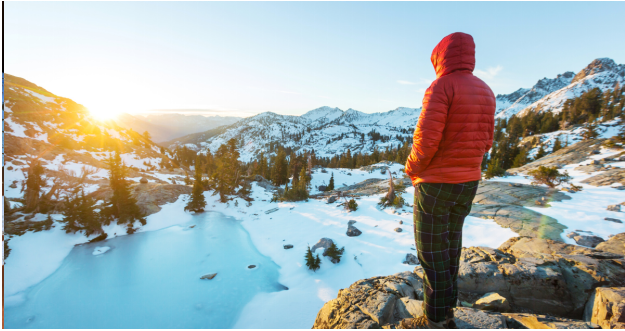The Annapurna Circuit trek, one of Nepal’s most popular and challenging long-distance treks, offers a once-in-a-lifetime experience to immerse oneself in the awe-inspiring beauty of the Himalayas.
The journey takes you through diverse landscapes, from subtropical forests to arid high-altitude deserts, while offering a unique opportunity to explore the region’s rich cultural heritage.
In this article, we will delve into the various aspects of the Annapurna Circuit trek, including the route, highlights, preparation, and more.
An Overview of the Annapurna Circuit Trek
The Annapurna Circuit trek is a circular route that covers approximately 150-230 kilometers (93-143 miles), depending on the starting and ending points chosen.
The trek typically takes between 12 to 20 days to complete and circles the Annapurna massif, passing through lush forests, picturesque villages, and crossing the Thorong La pass at 5,416 meters (17,769 feet) above sea level.
The journey begins in the lowlands and ascends through the Marsyangdi River Valley, eventually leading trekkers to the high-altitude desert of the Mustang region.
Route and Highlights
The traditional starting point of the Annapurna Circuit trek is the town of Besisahar in the Lamjung district. From there, the trail proceeds through the Marsyangdi River Valley, passing through numerous picturesque villages such as Chamje, Tal, and Dharapani. Trekkers also encounter the beautiful Kali Gandaki Gorge, the world’s deepest gorge.
As the trail ascends, the landscape changes dramatically, with subtropical forests giving way to the arid terrain of the Mustang region. The journey then leads to the high point of the trek, the Thorong La pass, which offers breathtaking panoramic views of the Annapurna and Dhaulagiri ranges.
After crossing the pass, the trail descends into the Kali Gandaki Valley, passing through the charming villages of Muktinath and Kagbeni. The trek then continues to the town of Jomsom, from where trekkers can either continue their journey to the hot springs of Tatopani or take a flight back to Pokhara, marking the end of their adventure.
Best Time to Trek the Annapurna Circuit
The best time to trek the Annapurna Circuit is during the pre-monsoon season (March to May) and the post-monsoon season (September to November). During these periods, the weather is generally stable, offering clear skies and comfortable temperatures, perfect for trekking.
The monsoon season (June to August) is not recommended due to heavy rain and the risk of landslides, while the winter months (December to February) can be challenging due to snowfall and extreme cold at higher altitudes.
Permits and Regulations
Trekking the Annapurna Circuit requires two permits: the Annapurna Conservation Area Permit (ACAP) and the Trekkers’ Information Management System (TIMS) card. Both permits can be obtained in Kathmandu or Pokhara before starting the trek.
Additionally, trekkers must follow the rules and regulations of the Annapurna Conservation Area, which include adhering to the “Leave No Trace” principle and respecting local customs and traditions.
Accommodation and Food
The Annapurna Circuit trek is a teahouse trek, meaning that trekkers stay in local guesthouses, known as teahouses, along the trail. These
teahouses provide basic accommodation, with private or shared rooms and communal dining areas. They also offer meals, snacks, and hot beverages, making it possible to trek without carrying a significant amount of food or camping gear.
The food available at teahouses is a mix of traditional Nepali cuisine and international dishes, with the classic staple being dal bhat, a meal of rice, lentil soup, and vegetables. Other options include Tibetan bread, momos (dumplings), pasta, and even pizza. It’s essential to stay hydrated and consume enough calories to maintain energy levels during the trek.
Physical Fitness and Acclimatization
The Annapurna Circuit trek is considered moderately challenging, requiring a good level of physical fitness and endurance. Trekkers should be prepared to walk for 6-8 hours per day on varied terrain, with steep ascents and descents. Prior trekking experience is beneficial but not mandatory, as long as one has a good baseline fitness level.
Acclimatization is crucial when trekking at high altitudes, as the risk of Acute Mountain Sickness (AMS) increases above 2,500 meters (8,202 feet). It’s essential to follow a gradual ascent profile and listen to your body. Rest days should be incorporated into the itinerary, allowing your body to adapt to the altitude.
Packing List and Gear
Packing appropriately for the Annapurna Circuit trek is crucial for a comfortable and safe experience. Some essential items to include in your packing list are:
- A sturdy pair of trekking boots
- A lightweight, waterproof, and breathable jacket and trousers
- Thermal base layers and fleece layers
- Hiking socks and underwear
- A sun hat and warm hat
- Gloves and neck gaiter
- A comfortable backpack with a rain cover
- A good quality sleeping bag and liner
- A headlamp with spare batteries
- A reusable water bottle or hydration system
- A first aid kit, including any personal medication
- Sunscreen and lip balm with SPF protection
- Trekking poles (optional but recommended)
- Sunglasses with UV protection
- Camera, power bank, and charging cables
- Snacks and energy bars
- Lightweight toiletries and a quick-dry towel
- Local Culture and Etiquette
The Annapurna Circuit trek offers a unique opportunity to engage with diverse cultures, from the traditional Hindu communities in the lower regions to the Tibetan-influenced communities in the upper regions. It’s essential to respect local customs and traditions while trekking. Some basic etiquette guidelines include:
- Dress modestly, covering shoulders and knees
- Remove shoes before entering temples or homes
- Seek permission before taking photographs of people or religious sites
- Avoid physical contact with monks or religious artifacts
- Refrain from smoking or consuming alcohol in religious areas
Conclusion
The Annapurna Circuit trek is a remarkable journey through the heart of the Himalayas, offering diverse landscapes, rich cultural experiences, and breathtaking views.
With adequate preparation, a sensible packing list, and an open mind, this adventure will undoubtedly be a highlight of any trekker’s lifetime. Whether you’re a seasoned trekker or new to long-distance trekking, the Annapurna Circuit promises to leave you with unforgettable memories and a deep connection to the majestic Himalayan mountains.
FAQs
How long does the Annapurna Circuit trek take?
The Annapurna Circuit trek typically takes between 12 to 20 days to complete, depending on the chosen route and pace.
How difficult is the Annapurna Circuit trek?
The Annapurna Circuit trek is considered moderately challenging, requiring a good level of physical fitness and endurance. Trekkers should be prepared to walk for 6-8 hours per day on varied terrain, with steep ascents and descents.
What is the best time to trek the Annapurna Circuit?
The best time to trek the Annapurna Circuit is during the pre-monsoon season (March to May) and the post-monsoon season (September to November), when the weather is generally stable, offering clear skies and comfortable temperatures.
What are permits required for the Annapurna Circuit trek?
The Annapurna Circuit trek requires two permits: the Annapurna Conservation Area Permit (ACAP) and the Trekkers’ Information Management System (TIMS) card. Both permits can be obtained in Kathmandu or Pokhara before starting the trek.
Do I need a guide for the Annapurna Circuit trek?
A guide is not mandatory for the Annapurna Circuit trek; however, having a guide can enhance your experience by providing valuable local knowledge, navigation assistance, and cultural insights. Additionally, a guide can help with arranging accommodation and ensuring a smooth trekking experience.
Is there a risk of altitude sickness on the Annapurna Circuit trek?
Yes, there is a risk of Acute Mountain Sickness (AMS) on the Annapurna Circuit trek, especially at altitudes above 2,500 meters (8,202 feet). It’s essential to follow a gradual ascent profile and incorporate rest days into your itinerary to allow your body to acclimatize.
What type of accommodation can I expect on the Annapurna Circuit trek?
The Annapurna Circuit trek is a teahouse trek, meaning that trekkers stay in local guesthouses, known as teahouses, along the trail. These teahouses provide basic accommodation, with private or shared rooms and communal dining areas.



